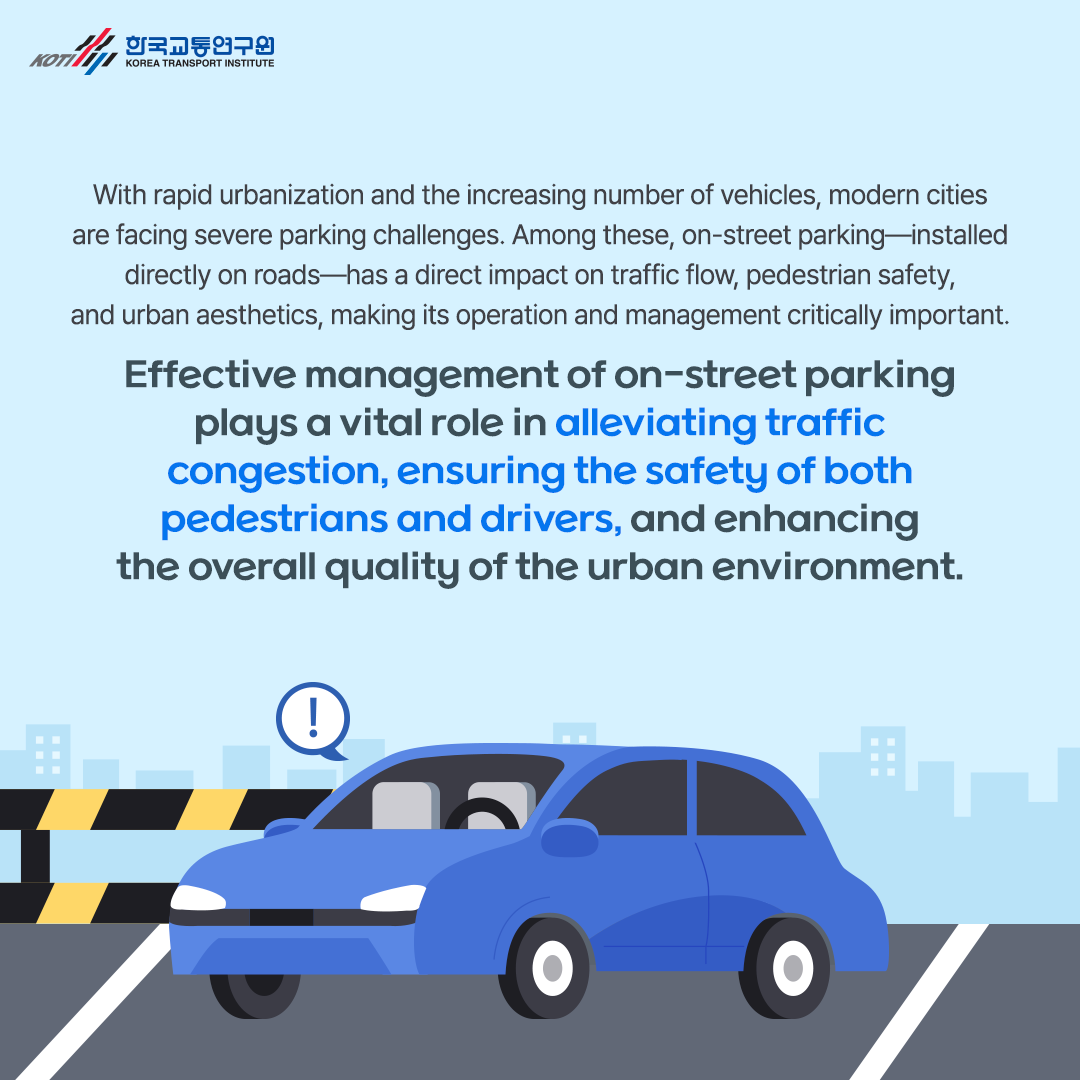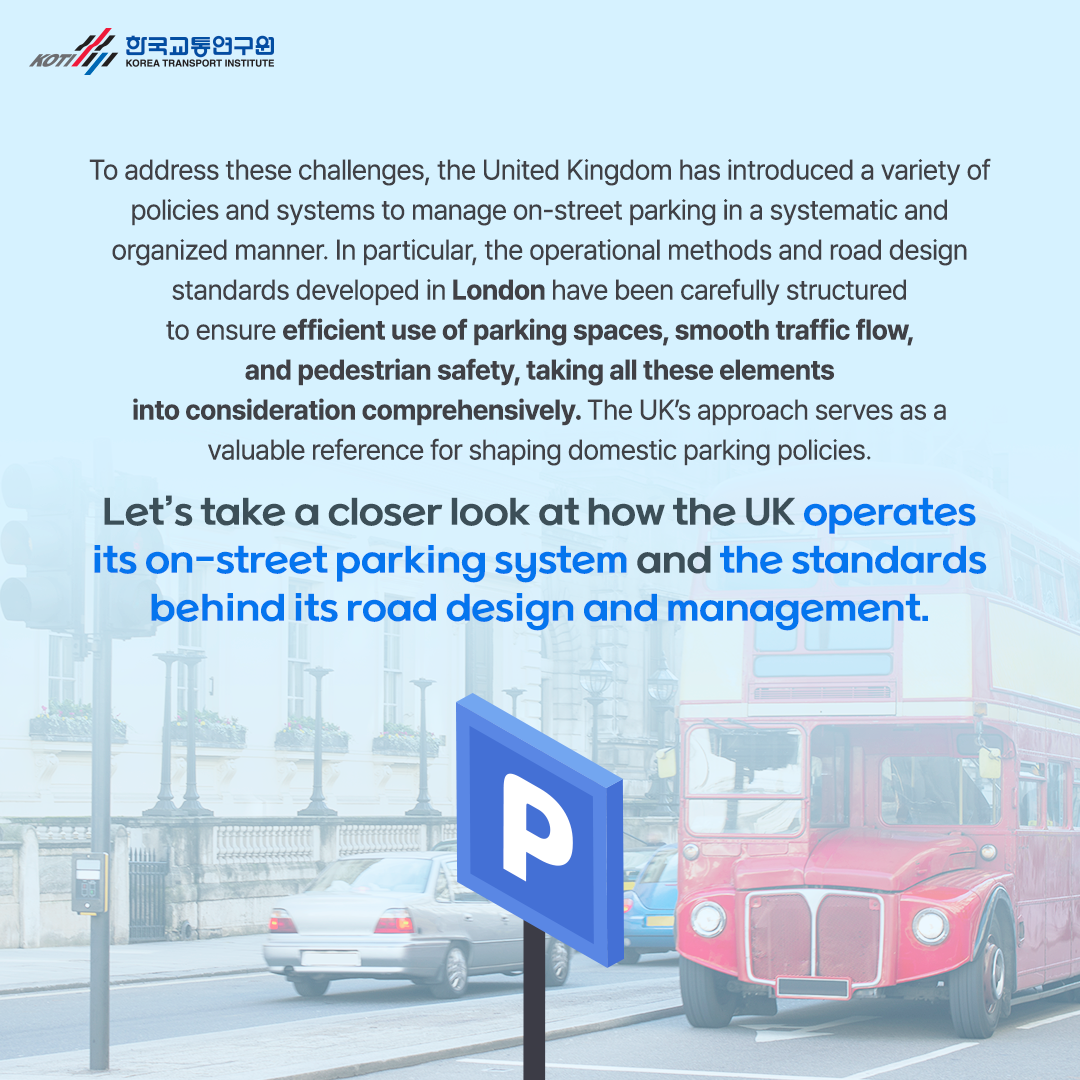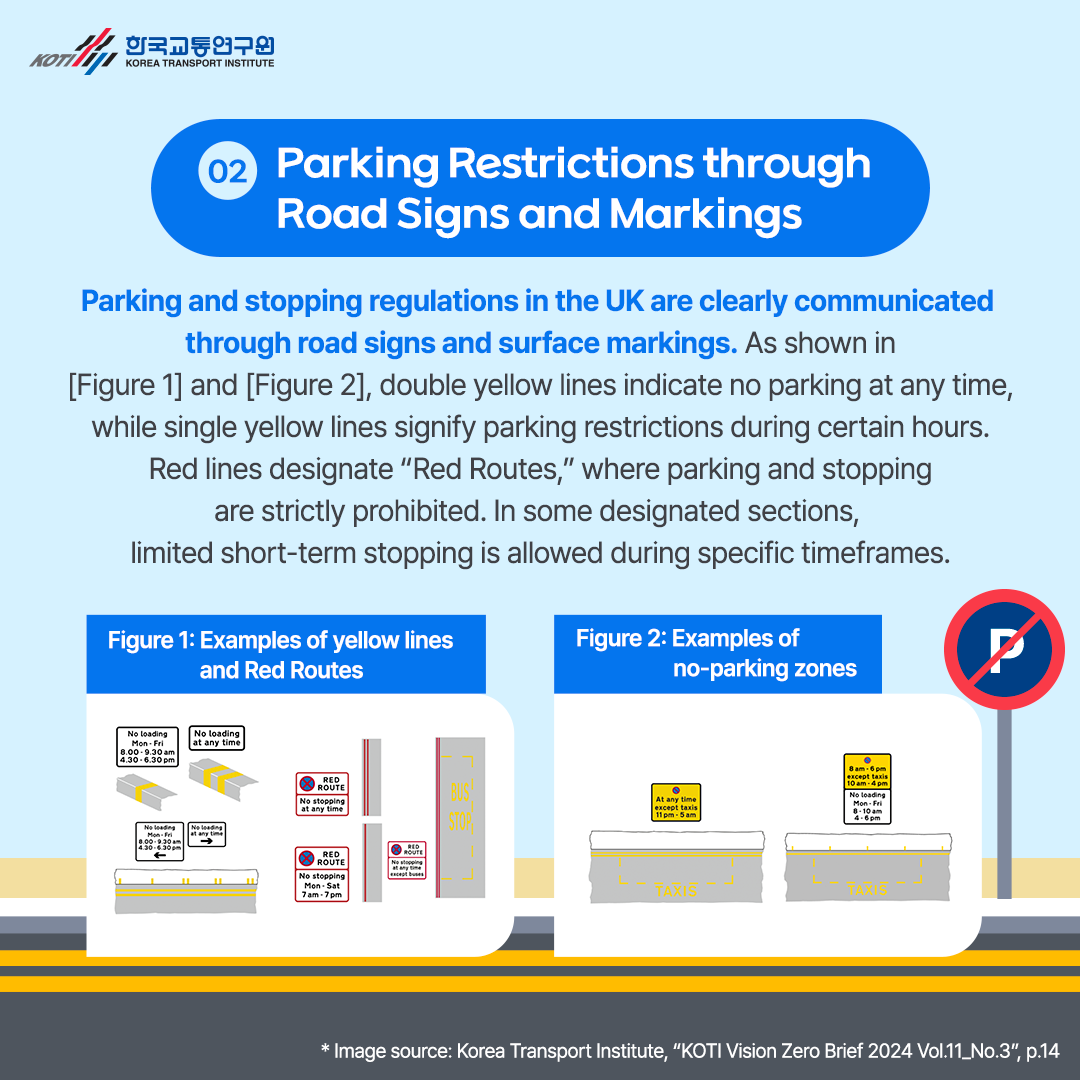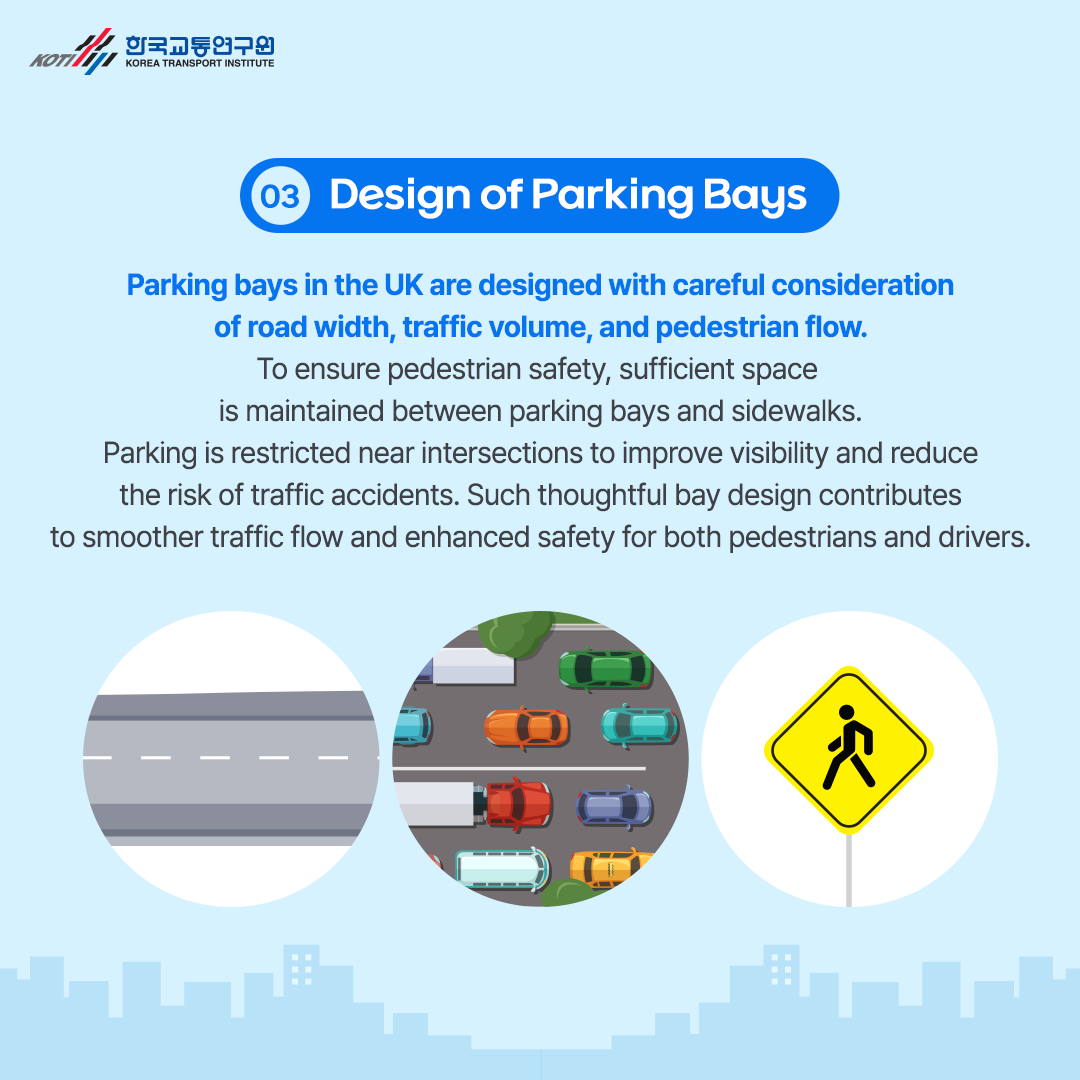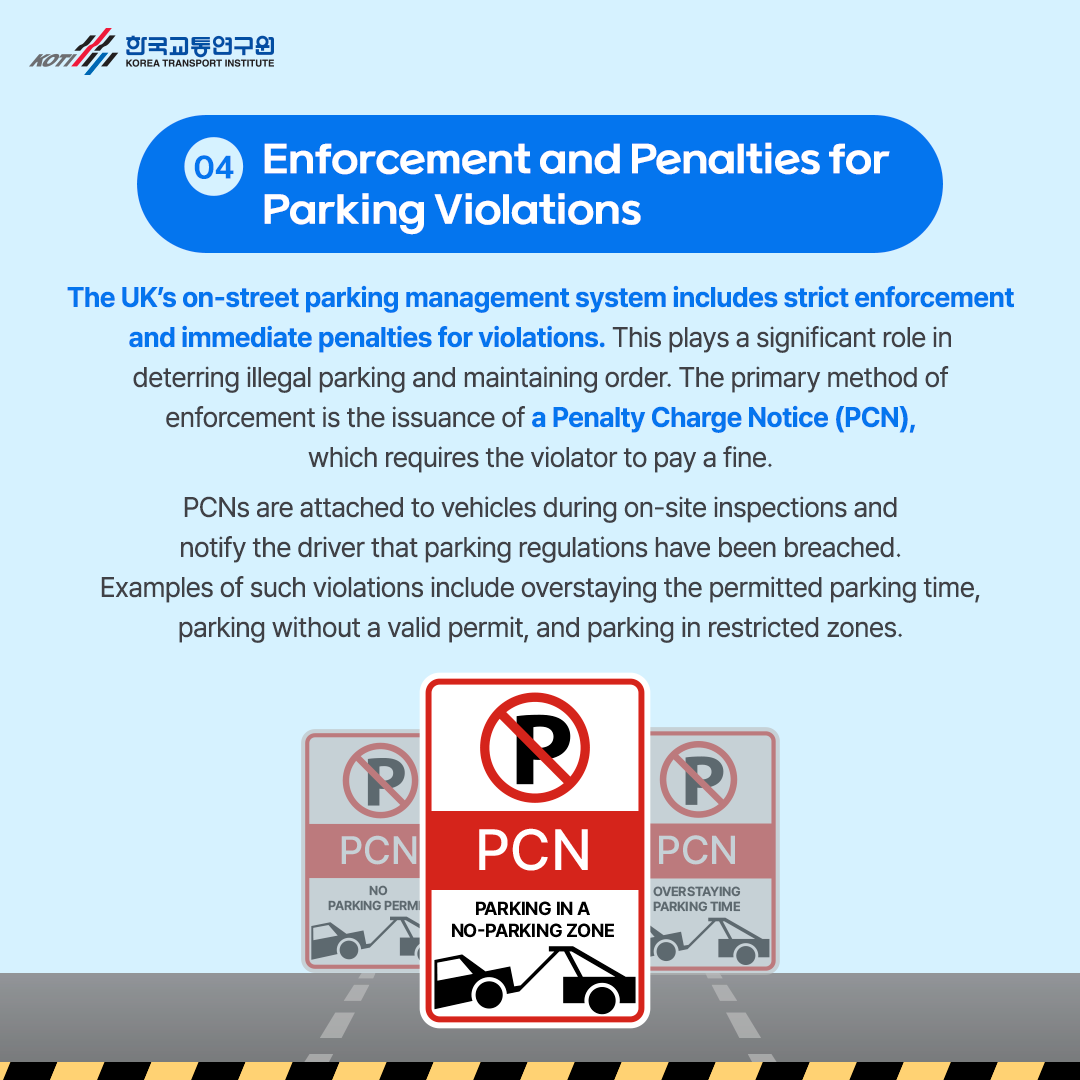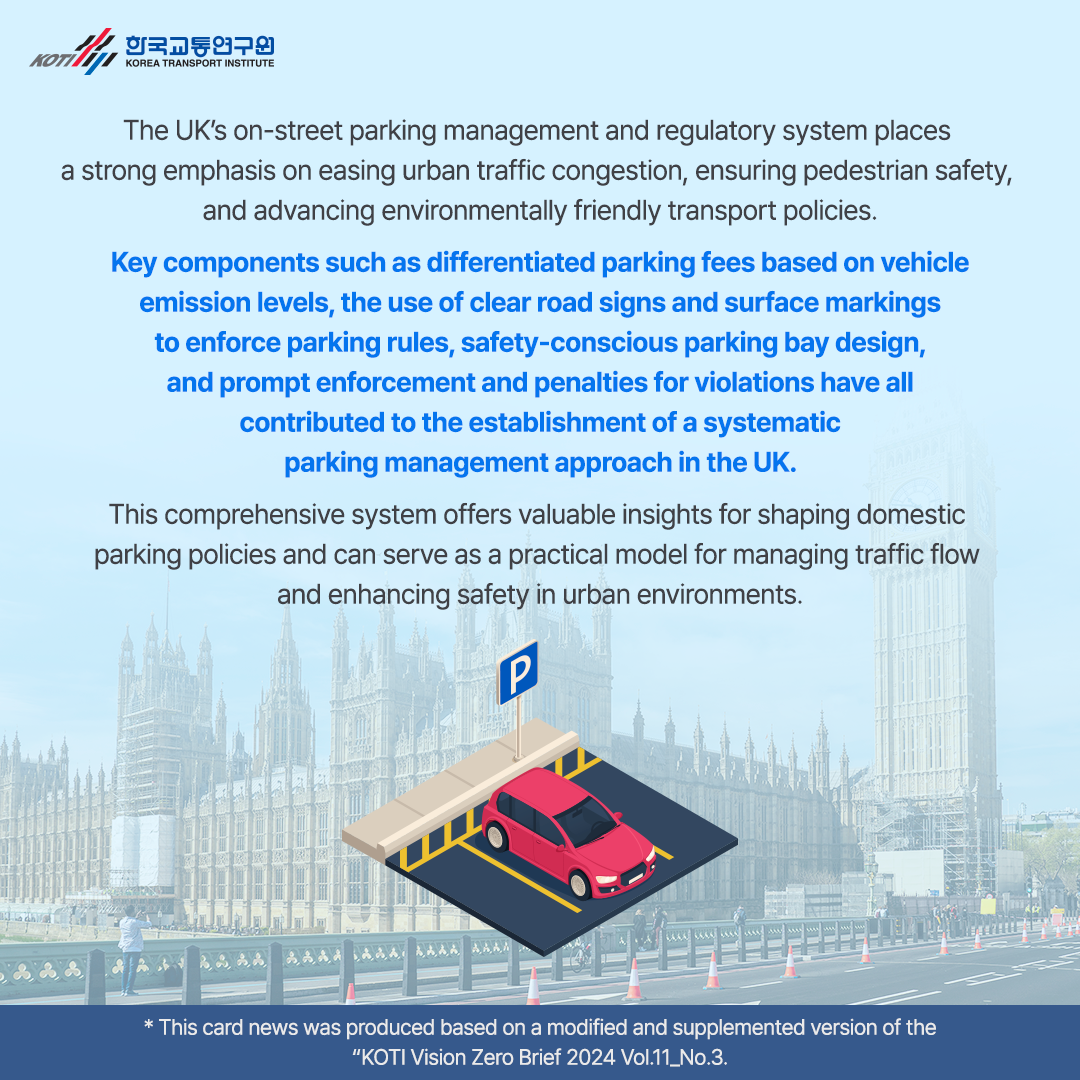Card News

NEWS
KOTI - Korea Transport institute
Feeds and Updates
Efficient Management of On-Street Parking in the UK
March 31 2025
-
Efficient Management of On-Street Parking in the UK
With rapid urbanization and the increasing number of vehicles, modern cities are facing severe parking challenges. Among these, on-street parking—installed directly on roads—has a direct impact on traffic flow, pedestrian safety, and urban aesthetics, making its operation and management critically important. Effective management of on-street parking plays a vital role in alleviating traffic congestion, ensuring the safety of both pedestrians and drivers, and enhancing the overall quality of the urban environment.
To address these challenges, the United Kingdom has introduced a variety of policies and systems to manage on-street parking in a systematic and organized manner. In particular, the operational methods and road design standards developed in London have been carefully structured to ensure efficient use of parking spaces, smooth traffic flow, and pedestrian safety, taking all these elements into consideration comprehensively.The UK’s approach serves as a valuable reference for shaping domestic parking policies.
Let’s take a closer look at how the UK operates its on-street parking system and the standards behind its road design and management.
On-Street Parking Management Practices in the UK
1. Parking Fee System
In the UK, on-street parking fees are structured based on vehicle emission levels. For example, in central London, vehicles with lower emissions are charged lower rates, while high-emission vehicles incur higher fees, encouraging the use of eco-friendly vehicles.
Parking rates also vary depending on the time of day and day of the week, and in some cases, free parking is allowed on weekends and public holidays.
2. Parking Restrictions through Road Signs and Markings
Parking and stopping regulations in the UK are clearly communicated through road signs and surface markings.
As shown in [Figure 1] and [Figure 2], double yellow lines indicate no parking at any time, while single yellow lines signify parking restrictions during certain hours.
Red lines designate “Red Routes,” where parking and stopping are strictly prohibited. In some designated sections, limited short-term stopping is allowed during specific timeframes.
Figure 1: Examples of yellow lines and Red Routes / Figure 2: Examples of no-parking zones
* Image source: Korea Transport Institute, “KOTI Vision Zero Brief 2024 Vol.11_No.3”, p.14
Additionally, signboards display the exact days and times when parking is restricted, helping drivers stay informed and compliant.
This systematic use of signage and markings makes it easier for drivers to recognize and follow parking regulations.
3. Design of Parking Bays
Parking bays in the UK are designed with careful consideration of road width, traffic volume, and pedestrian flow. To ensure pedestrian safety, sufficient space is maintained between parking bays and sidewalks. Parking is restricted near intersections to improve visibility and reduce the risk of traffic accidents. Such thoughtful bay design contributes to smoother traffic flow and enhanced safety for both pedestrians and drivers.
4. Enforcement and Penalties for Parking Violations
The UK’s on-street parking management system includes strict enforcement and immediate penalties for violations.This plays a significant role in deterring illegal parking and maintaining order. The primary method of enforcement is the issuance of a Penalty Charge Notice (PCN), which requires the violator to pay a fine.
PCNs are attached to vehicles during on-site inspections and notify the driver that parking regulations have been breached. Examples of such violations include overstaying the permitted parking time, parking without a valid permit, and parking in restricted zones.The UK’s on-street parking management and regulatory system places a strong emphasis on easing urban traffic congestion, ensuring pedestrian safety, and advancing environmentally friendly transport policies.
Key components such as differentiated parking fees based on vehicle emission levels, the use of clear road signs and surface markings to enforce parking rules, safety-conscious parking bay design, and prompt enforcement and penalties for violations have all contributed to the establishment of a systematic parking management approach in the UK.
This comprehensive system offers valuable insights for shaping domestic parking policies and can serve as a practical model for managing traffic flow and enhancing safety in urban environments.
* This card news was produced based on a modified and supplemented version of the “KOTI Vision Zero Brief 2024 Vol.11_No.3.

